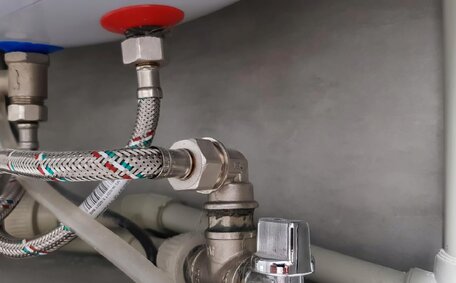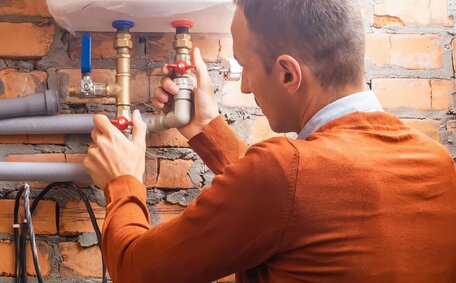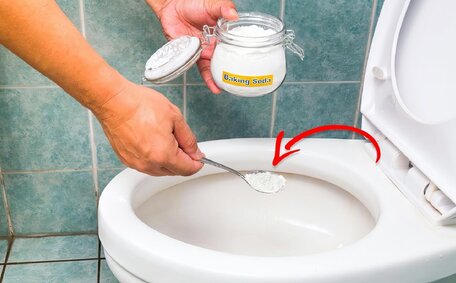What is Trenchless Pipe Relining?
Trenchless pipe relining is an innovative technique for fixing damaged underground drain pipes by inserting a flexible epoxy or PVC tube into the existing pipe, forming a 'pipe within a pipe’.
This relining process has numerous benefits compared to traditional pipe repair methods.
It also offers notable savings on costs and labour.
Initially, a CCTV camera is fed through the pipe to locate damage and identify access points. After cleaning, a flexible liner tube, saturated with epoxy resin, is inserted.
The liner bonds to the old pipe walls, forming a smooth, seamless and long-lasting repair.
Trenchless relining renews old sewer lines from the inside out. It can extend the life of pipes by 50 years or more, making it an extremely durable and sustainable solution. With minimal fuss and maximum value, it is an excellent option for residential and commercial pipe repairs.
When to Choose Trenchless Relining Over Traditional Excavation Methods
Trenchless relining, a superior pipe repair option to traditional excavation methods, preserves landscapes, minimises downtime, and is ideal for difficult locations.
Trenchless relining is particularly beneficial when:
- Pipes are located under structures, paths, trees or other assets you want to preserve
- Buildings or sites can’t handle major downtime from excavation and pipe replacement
- Pipes run under sensitive environments like waterways or heritage sites
- Repair costs need to be minimised due to budget constraints
Proven reliable for over 40 years, trenchless relining ensures seamless integration with existing pipes with minimal disruption due to the eliminated need for digging.
Efficiently upgrading pipes to contemporary standards, trenchless relining is the preferred method for underground pipe repairs on both commercial and residential properties.
How to Evaluate if Your Pipes are Suitable for Trenchless Relining
An expert assessment is essential to evaluate if your damaged pipes are candidates for trenchless relining, which North Epping Plumbing can provide.
Key factors we consider include:
- Pipe material – generally only pipes made of clay, concrete, PVC, steel or cast iron can be relined
- Extent of damage – cracks, breaks, root invasion and corrosion
- Pipe location – accessibility for lining equipment
- Pipe diameter and length
Depending on the dimensions and access, extensive damage may not preclude the possibility of relining. We use CCTV cameras to thoroughly inspect pipes and identify any issues or blockages.
From this detailed inspection, our trenchless relining specialists can determine if your pipes meet the criteria. We’ll explain the process, costs and timeframes involved so you can make an informed decision.
For an expert assessment and professional relining advice, reach out to North Epping Plumbing at 1300 349 338 or email us at [email protected]. With over 40 years of plumbing expertise, you can trust North Epping Plumbing to perform drain pipe relining and renew your pipes with minimal fuss.
Step-by-Step Process of Trenchless Pipe Relining
Inspection
The first step in assessing trenchless relining suitability is a CCTV pipe inspection, where a camera is sent through the pipe to look for damage, blockages, or root invasion.
Cleaning
We employ a high-pressure hot water jet wash with specialised nozzles to cleanse the pipes and eradicate debris, preparing them for the relining process.
Relining
After cleaning, we saturate a flexible epoxy resin liner and insert it into the old pipes via an access point.
The liner is inflated and bonds tightly to the old pipe walls. Infrared lamps speed up curing. Once cured, the liner forms a durable, integrated new pipe within your old one. The final step is reconnecting lateral joins and testing water flows before reinstating access points.
CCTV Pipe Inspection
CCTV or video pipe inspection is a key first step in this trenchless relining method. We feed a camera on a flexible cable all the way through your pipe to thoroughly inspect its interior condition.
This provides vital information to evaluate if trenchless relining is suitable for your pipes. It accurately identifies any:
- Cracks
- Breaks
- Blockages
- Tree root invasions
- Other damage
The camera inspection also locates bends and connections. This helps our team plan the optimal access points for inserting relining equipment and lateral junction reconnections.
As the camera traverses the pipe, it enables close examination of problematic areas, providing comprehensive footage that informs the recommended repair method.
For more information about CCTV drain inspections or relining evaluations, please call our team on 1300 349 338.
High Pressure Water Cleaning
Before inserting the epoxy resin liner, we thoroughly clean the pipe interior walls using high-pressure water jetting. Powerful jet nozzles scour all debris, deposits and blockages to create an optimal bonding surface.
Cleaning removes:
- Grease or fat deposits
- Mineral build-up
- Old pipe materials or linings
- Roots and intrusions
The high-pressure water blast at 2500psi ensures the clearance of extensive corrosion and build-up. This cleaning phase renews the pipe walls, allowing the liner to form a seamless seal.
It’s vital to thoroughly clean pipes prior to trenchless relining. Our high pressure jetting equipment scrubs pipes to a smooth, clean surface ready for a durable epoxy liner that will last over 50 years.
Insertion of Cured-in-Place Pipe Lining
The insertion of the cured-in-place epoxy liner is the key step in the trenchless relining process. After cleaning and inspection, we saturate the felt liner tube with special two-part epoxy resin. This flexible liner is then inserted into the damaged pipe through an access point.
Using water pressure, we inflate the liner tube like a balloon, pressing it tightly to all walls of the old pipe.
Inflating the liner carefully eliminates air pockets that could compromise plumbing integrity, while externally attached infrared lights speed up the resin’s curing.
The liner forms a secure bond along the entire pipe length, ensuring a tight seal. Once fully cured, we reopen service lines and lateral connections. Testing confirms normal water flows, ensuring the pipe been repaired is functioning optimally before we reinstate all access points used during the process.
This precision installation technique, often referred to as trenchless drain repair, renews pipes from the inside out. It leaves your property or site mess-free with plumbing restored to optimal function. The new epoxy barrier prevents any further corrosion or leaks.
Curing and Hardening the New Pipe Liner
Once the epoxy resin liner tube is inserted and inflated, specially designed infrared lights attached outside the pipe speed up curing and hardening. This accelerated UV curing process usually takes 2 to 4 hours.
During curing, the resin-soaked felt liner hardens into an exceptionally strong, seamless rigid pipe lining. The epoxy undergoes a chemical reaction and bonds securely to the old pipe walls.
Over time, the liner will become even stronger than the original pipe. Its structural integrity combined with the pipe improves load-bearing capacity. The smooth epoxy barrier also resists corrosion and abrasion from flows.
The cured-in-place liner creates a new pipe within the existing damaged one. It renews drainage function and prevents further deterioration. With over 50 years lifespan, trenchless relining offers a fast, effective and permanent underground pipe repair solution.
Key Benefits and Advantages of Trenchless Relining
Trenchless relining provides several advantages over traditional excavation methods for pipe repairs. Key advantages include:
Cost Savings
Pipe relining typically costs between $55 to $77 per metre, a substantial saving compared to over $200 per metre for full pipe replacement. With additional cost savings from minimal excavation, it is the most affordable repair method.
Less Disruptive
As no major digging or demolition to access pipes is needed, it avoids property damage or prolonged road closures. Business operations or traffic flows see little to no impact.
Faster Repair Time
The average project takes just one day. Curing the liner takes only 2 to 4 hours. This allows for an incredibly quick fix compared to potential weeks for pipe replacements.
Long-lasting Solution
The integrated epoxy liner surpasses the original pipe in strength, boasting a potential lifespan exceeding 50 years. It offers a permanent underground repair that far outlasts traditional fixes.
Eco-friendly
Requiring fewer equipment and lessening waste and transport, trenchless relining is a sustainable and energy-efficient alternative to excavation methods.
Trusted across Australia for over 40 years, trenchless relining provides mess-free, affordable and durable drainage solutions. Contact North Epping Plumbing on 1300 349 338 for professional assessments.
Case Studies and Real-World Examples
With over 40 years of experience, North Epping Plumbing has a strong track record of successfully renewing Sydney’s pipes through trenchless relining. Here are two examples of the durable solutions we’ve delivered:
Commercial Building Sewer Repairs
The ageing sewer pipe requiring sewer repair under a commercial office building had begun backing up and causing unpleasant odours inside. Our inspection revealed cracked pipes with tree root invasions and mineral build-up.
We thoroughly cleaned the 125m long pipe then inserted a specialised liner bonded with epoxy resin. After curing, this created a seamless, leak-free main sewer line without needing any excavation. The business could continue unaffected, with pipe integrity restored for decades.
Residential Stormwater Drainage Renewal
The stormwater drainage pipes under a home had become 50% blocked with debris and sediment over 30 years. We relined the pipes with an integrated PVC sleeve to match the original material. This quickly renewed drainage flows, preventing further flooding and erosion during heavy rains.
Both commercial enterprises and homeowners trust North Epping Plumbing for stress-free restoration of drainage systems with our trenchless expertise. Contact us for your relining assessment today.
Environmental Sustainability of Trenchless Relining
Trenchless relining is significantly more environmentally friendly than traditional excavation methods. As it requires almost no heavy machinery for digging, there is far less equipment operation, fuel use, noise, and waste production.
The liners themselves are also eco-friendly. Modern epoxy resins used to saturate the liner fabrics are water-based with low VOC emissions. They cure into an incredibly strong, inert pipe barrier that won’t leach chemicals over time.
By preserving existing pipe structures instead of full replacements, trenchless relining reduces material use and transport impacts. It also avoids landfill waste from broken concrete and old pipes. Minimal disruption also prevents pollution incidents on site.
At North Epping Plumbing, our commitment to sustainable practices underpins our projects. Using recycled water in our drain relining process and implementing Responsible Recycling for waste, we aim to provide mess-free, environmentally responsible plumbing solutions.
Offering a solution that lasts over 50 years, trenchless relining achieves effective underground drainage repairs with consideration for the surrounding environment. Get in touch to explore how this durable, sustainable repair method can benefit you.






